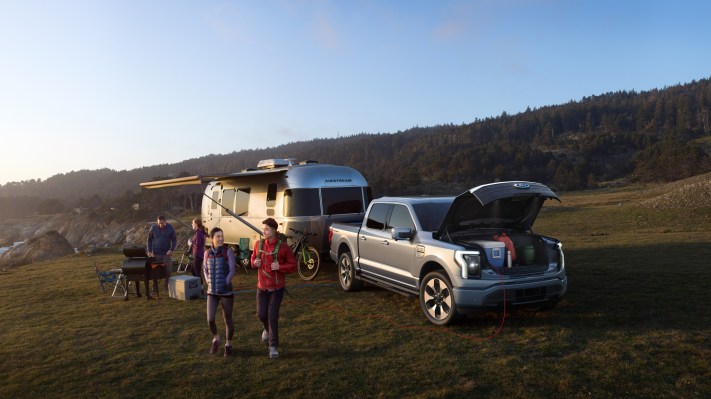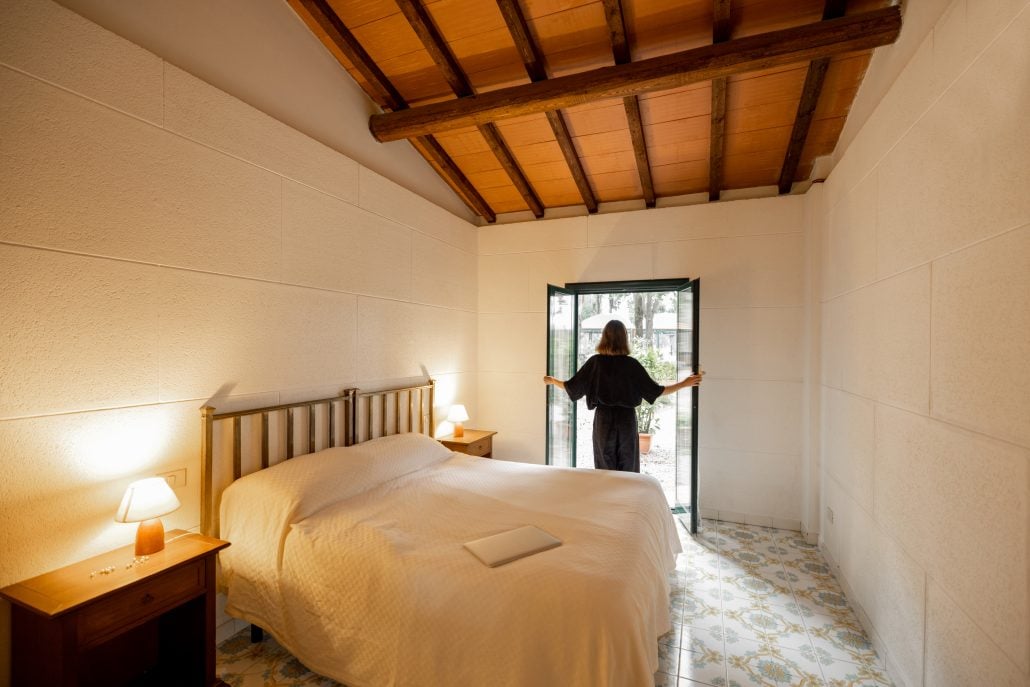Amazon just opened up its Sidewalk network for anyone to build connected gadgets on
A Sidewalk coverage map claims the network reaches over 90 percent of the US population. | Image: AmazonIt turns out that I have a low-power, low-bandwidth, long-range IoT network all around me, ready and waiting for my smart gadgets...
/cdn.vox-cdn.com/uploads/chorus_asset/file/24541041/Amazon_Sidewalk_Coverage_Map.png)
It turns out that I have a low-power, low-bandwidth, long-range IoT network all around me, ready and waiting for my smart gadgets to jump on. Today, Amazon revealed just how far its Sidewalk IoT network penetrates the average American neighborhood.
And it’s deep.
The company’s first Sidewalk coverage map claims that over 90 percent of the US population can access the now public network (it’s limited to the US only). Using a Sidewalk developer test kit supplied by Amazon, I drove around my town to confirm this data and, over three days of traveling more than 40 miles, found that the connectivity was surprisingly strong in my corner of South Carolina, even in the wilds of a national forest.
Image: Jennifer Pattison Tuohy / The Verge
Amazon has released this data in conjunction with the official opening of Sidewalk to developers. First announced in 2019, Amazon Sidewalk is a new low-power, wide-area network (LPWAN) that Amazon believes will help enable the next wave of connected devices. It’s not designed to replace cellular data for high-bandwidth devices but to be used instead of expensive LTE or 5G connectivity on gadgets that don’t need that much data and where paying $10 or more a month for data is excessive.
Currently, Sidewalk mainly exists to help Ring cameras send motion notifications even when they’re offline and allow Level smart locks to connect to the internet without the need for battery-sapping Wi-Fi radios. Amazon has also developed a few early partnerships, including with CareBand, which developed a wearable health tracker. Now, Amazon wants others to build devices that use the free network.
All you need to do is request a test kit — a small gray wireless device with Ring branding on it — gauge if the connectivity in the area you want to deploy your product is sufficient, and you can start building. Nordic, Silicon Labs, and other silicon companies have SDKs and HDKs available now, and AWS IoT Core for Sidewalk provides a one-stop shop for connecting devices. While only the AWS cloud service can directly receive the data transmitted via Amazon Sidewalk, Limp says developers aren’t required to use AWS cloud service for their device data.
“I want someone to build me a long-range connected meat thermometer.” – Dave Limp
What type of consumer IoT devices could benefit from Sidewalk? Think dog trackers, package trackers, soil moisture sensors, weather stations, leak sensors, mailbox sensors, pill bottles, solar panel controllers, garage door controllers, and anything else that doesn’t always live somewhere Wi-Fi is a given.
“I want someone to build me a long-range connected meat thermometer,” Dave Limp, SVP of devices and services at Amazon, tells me. “I’ve had so many things fail. You know, you’re in South Carolina; overcooked pork butt is not what you want.”
As someone who has indeed tried to smoke pork on a connected cooker in my backyard, I can empathize with the frustrations of trying to cling to one bar of Wi-Fi while enjoying the outdoors. There are many use cases in the smart home where a network like this makes sense. But the biggest benefit will likely be from the dynamic coverage Sidewalk can offer.
As you can see from my map, I drove around while connected to Sidewalk, illustrating how moving devices, like dog trackers and package trackers, could be monitored through Sidewalk, helping bridge the gap between the smart home and the smart city. However, Amazon tells me there is no update on the Ring Fetch dog tracker announced when Sidewalk first debuted.
Image: Jennifer Pattison Tuohy / The Verge
What is Amazon Sidewalk?
The Sidewalk network is designed as a long-range shared community network. It works over three existing wireless radio technologies — Bluetooth Low Energy (BLE) for short distances, LoRa for long range, and frequency shift keying using 900MHz. These frequencies can bridge to the internet using any nearby Sidewalk gateway — which currently includes Echo Show 10, Echo, Echo Dot smart speakers, and wired Ring spotlight and floodlight cameras, as well as a small number of commercial grade bridges. Sidewalk sips a small amount of bandwidth from the internet these devices are connected to so it can send its low data messages. Yes, it’s using your internet connection — hence the word “community.”
It’s kind of genius and also literally something only Amazon could do at this scale. What other company has thousands of connected devices in people’s homes? When Amazon first launched Sidewalk on its devices, it was turned on automatically — which was not a good move. The backlash was fierce, and Amazon quickly rolled out the ability to disable participation in the network. Now, when you buy a new device capable of being a Sidewalk bridge, you can choose to opt in.
It’s kind of genius and also literally something only Amazon could do
“Adoption among users with Ring and Echos has been very high,” says Limp. “Because Ring has real value that it adds right away. You can get a motion alert without having to have Wi-Fi all the time.” If your Ring camera loses Wi-Fi connectivity, it can still send you alerts using Sidewalk — by connecting to a nearby bridge that’s still online. I’ve tested this personally, and it does work.
Image: New Cosmos
Sidewalk was originally developed as a solution for Ring video doorbell connectivity issues. Since the company’s smart doorbells are placed outside of homes, often with brick or plaster between them and a Wi-Fi router, Amazon found that no matter how good an antenna they put in, they would still miss alerts. “We invented internally a protocol [to solve this], and then a couple of years ago announced our intent to externalize that and call it Sidewalk,” says Limp.
Just last year, when Sidewalk was turned on, Limp says there were over a billion instances where Sidewalk was able to deliver a notification to Ring customers they would have missed without it. “We were able to send those notifications over this low bandwidth backhaul network, and the customer was still notified that something happened, so they could check it out when things got back online,” he says. Amazon says Sidewalk won’t snoop on the data from your devices — you can read more about Sidewalk’s privacy and security claims here (pdf).
Sidewalk could bridge the gap between the smart home and the smart city
A few companies have been working with Amazon on developing Sidewalk-enabled products already. Today, New Cosmos announced Denova Detect, a battery-powered natural gas alarm; Primax is launching Woody, a smart door lock; and Netvox has a new multi-sensor that combines air conditioning monitoring, water leak detection, and state monitoring. These products wouldn’t require users to have an Amazon Sidewalk bridge in their home; they could leverage Sidewalk connectivity from any nearby bridge.
As for where Sidewalk fits into the new and changing smart home landscape, it’s a welcome addition, but it’s not the only option. Z-Wave has a long-range chip that can extend connectivity over 300 feet, and Thread is a low-power mesh network that could extend beyond your home’s walls into the garden or garage with enough devices. But neither of these offers the mobility of Sidewalk. As for Matter, Limp says Sidewalk is complementary to the new smart home standard; Sidewalk and Matter already coexist in Amazon’s Echo smart speakers. “As a data link and transport layer, Sidewalk is competing more with protocols like Wi-Fi than with Matter,” he explains. “You could, theoretically, port some of the Matter Standard to Sidewalk if you wanted to.” Now, things are getting very interesting.
Update, Friday, March 31st 8:15PM: A previous version of this article noted Dave Limp said using AWS cloud services is not required to access Sidewalk. After publication, Amazon reached out to specify that only the AWS cloud service can directly receive the data transmitted via Amazon Sidewalk, but developers can move that device data from AWS to a different cloud service.

 Troov
Troov 































